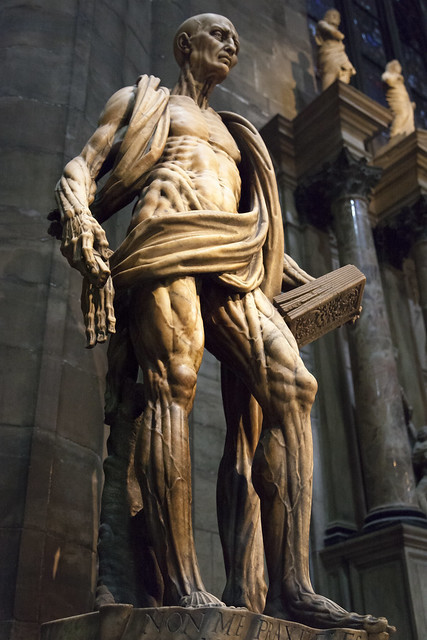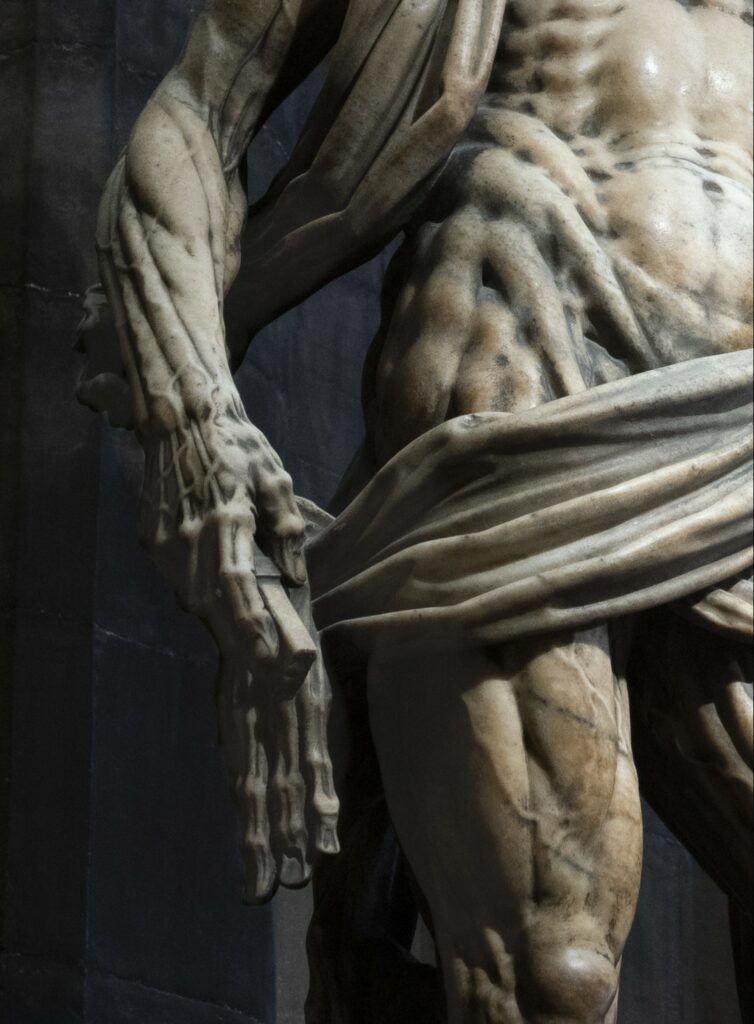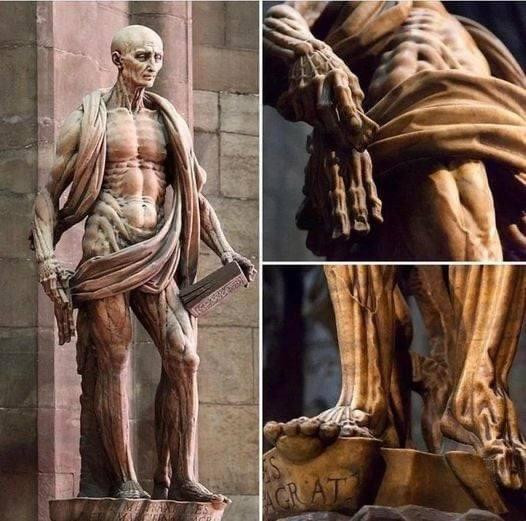A Masterpiece of Martyrdom
In the heart of Milan’s magnificent Duomo stands a statue that stops visitors in their tracks. Created by the skilled hands of 16th-century Italian sculptor Marco d’Agrate, this haunting depiction of Saint Bartholomew serves as a powerful testament to the horrors of martyrdom and the indomitable human spirit.

The Flayed Apostle
Saint Bartholomew, one of Jesus’ twelve apostles, met a gruesome fate for his unwavering faith. D’Agrate’s sculpture captures the aftermath of the saint’s execution with chilling detail. Bartholomew stands, his own flayed skin draped around his shoulders like a macabre cloak. The intricate folds and textures of the dissected flesh appear almost lifelike, evoking a visceral reaction from those who dare to look closely.

Beyond Physical Suffering
Serenity in the Face of Torment

Despite the horror of his situation, Saint Bartholomew’s face bears an expression of serene acceptance. This stark contrast between his physical state and spiritual composure speaks volumes about the strength of his convictions and the triumph of faith over bodily pain.
A Universal Message
While rooted in Christian history, the statue transcends its religious context. It invites viewers of all backgrounds to contemplate the human capacity for resilience in the face of unimaginable adversity. The saint’s willingness to endure such torment for his beliefs challenges us to examine our own convictions and the depths of our inner strength.
Confronting Mortality
The Fragility of Existence

D’Agrate’s masterpiece forces us to confront our own mortality. The flayed skin serves as a stark reminder of human vulnerability and the fleeting nature of life. Visitors to the Duomo di Milano find themselves grappling with profound questions about existence, purpose, and the meaning we ascribe to our brief time on Earth.
A Lasting Impact

The statue of Saint Bartholomew stands as a testament to art’s power to challenge and transform our perspectives. In its unflinching depiction of martyrdom and the human condition, this sculpture compels us to confront fundamental truths about our existence. Those who encounter this remarkable work in the grand setting of Milan’s Duomo are left with a profound and lasting impression, carrying with them a renewed appreciation for the resilience of the human spirit and the enduring power of deeply held beliefs.

